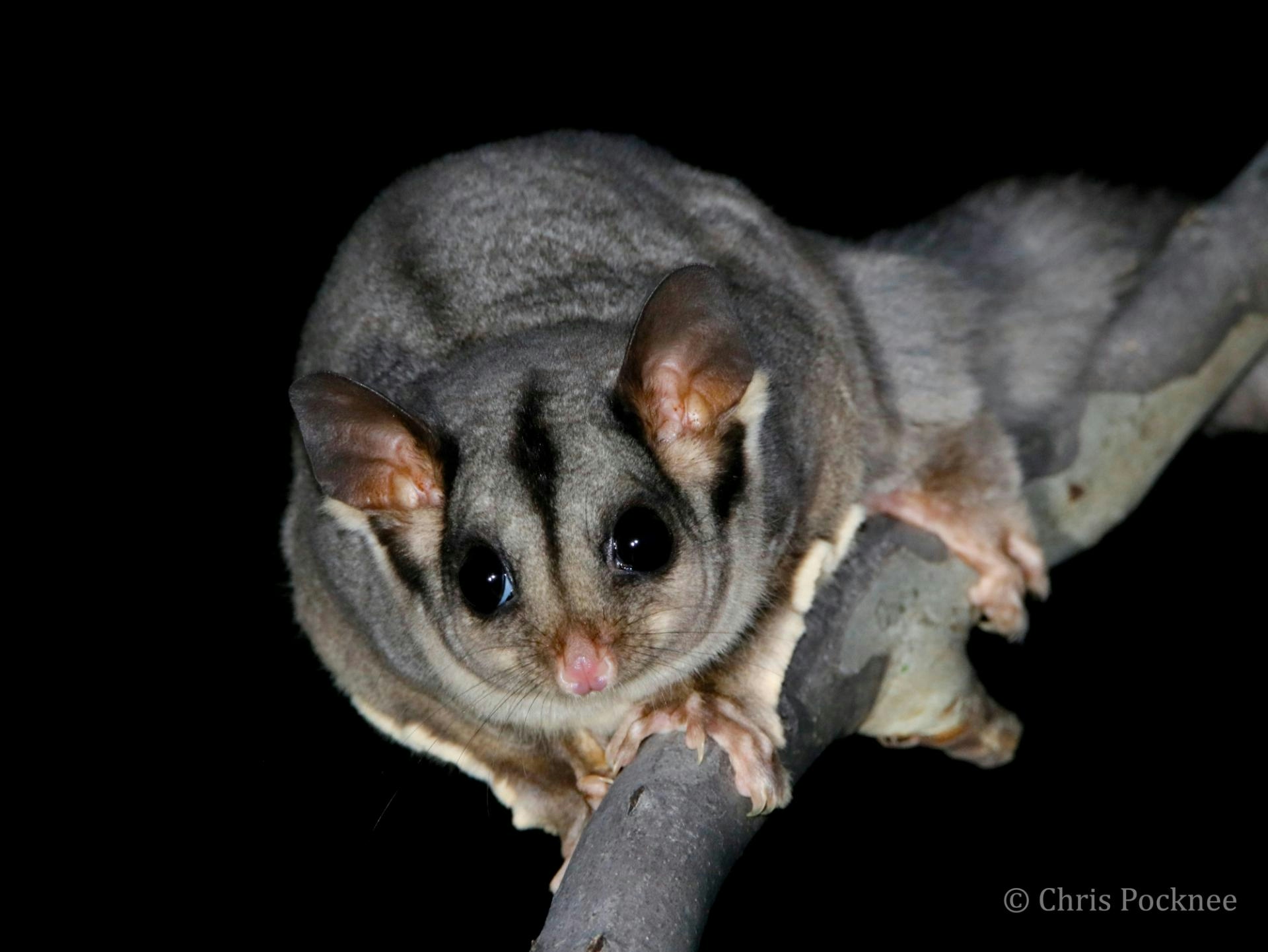21 December 2022
It was just after dusk on a Saturday night.
The rain was coming down and the wind blowing through the trees. Surely any self respecting critter would have been hunkered down deep in their tree hollows or burrows….
The same couldn’t be said for the Project Platypus team and our visiting colleagues from the Central Biolinks Alliance. Equipped with wet weather gear and ‘night vision goggles’ (or more accurately, thermal imaging monoculars), we were setting out on a mission to find Squirrel Gliders…
Why Squirrel Gliders?
One of the biggest threats to Australian biodiversity is habitat loss and fragmentation. This results from land clearing for development, agriculture, and forestry. When habitat is divided into smaller, disconnected patches, it becomes more difficult for animals to move across the landscape to find food, shelter and mates. As a result, the populations dwindle.
This is sadly the story for one of Australia’s most adorable animals…the Squirrel Glider.
Squirrel Gliders are an endangered species in Victoria.
Their populations have become extremely fragmented and numbers have dwindled. Most of the Victorian populations occur north east of Bendigo in the Murray Valley Plains and box-ironbark country. Sparse populations had been recorded around the northern Grampians region, including sightings on camera traps around Lake Lonsdale in 2019. With the exception of a single record from the 80s near Stuart Mill, there are no populations recorded between the Grampians and the Murray Valley Plains east of Bendigo. No Squirrel Gliders have been reported around Dadswell Bridge and Glenorchy since 1991. We worried that without up-to-date data, the gliders could still be declining right under our nose!
Have we lost these isolated populations?
Or are they still hanging on? Our neighbours at the Biolinks Alliance recently held a symposium where the same questions arose. Biolinks Alliance is involved in a national glider conservation program, called Glideways. This program aims to team up local conservation groups all across eastern Victoria, to connect glider habitat in the Grampians all the way to Far North Queensland in one long “glideway.” The area between the Grampians National Park and Pyraneese State Forest would be an important section of the path.
If Squirrel Gliders were indeed still living within that path, we want to know exactly where. Then we can plan the next habitat stepping stones needed to connect their isolated populations and help them once again move across the landscape and flourish. So the Central Biolinks Alliance and Project Platypus decided to team up on a survey!
Calling in the experts
Expert glider spotters from the Biolinks Alliance, Chris Pocknee and Bert Lobert, picked out several sites they thought would have the highest chance of hosting gliders, based on previous records and their knowledge of what sort of habitat the gliders prefer. Then they came down for a weekend of squirrel searching in late November. We conducted two nights of surveys in small teams. Here is what we found…
The night of the squirrel search
We started our search just after dusk. We walked quietly through the woodlands, using a thermal imaging monocular to look for ‘warm bodies’ sitting in cold trees. We also each had a torch, but as you can see in this pair of photos, to the right and below – a simple torch was no match for the spotting power of the thermal monoculars! So we left our torches turned off and walked in the darkness, until a heat signature was spotted.
The thermal night scope really proved its worth!
These two photos show how amazing it was for quickly spotting nocturnal arboreal birds and mammals. Above is what our eyes see, as we shine a torch into the branches at night. But below is our view through the thermal monocular. A nocturnal mammal glows clearly towards the upper left of the photo! After finding a heat signature, we would turn our torches back on, to confirm what sort of critter we had found.
Our first two sites yielded several Sugar Gliders, but no Squirrel Glider yet
This was an exciting enough find for those in our group, like myself, who had never seen them in the wild! We also saw several Ringtail and Brushy Tail Possums, sleeping birds, and a tawny frogmouth.
As the chill set in and our warm beds sounded more and more inviting, we cracked into the “emergency chocolate” and decided to try for one more site just off the Western Freeway. After a few false starts, and an encounter with a fox, a promising ‘glider-ish’ shape was spotted through the thermal monocular...
We snuck up close, turned on the lights, and there it was…a magnificent Squirrel Glider!
This glider was a bit of a performer as well. We must have stood watching it forage around the branches for 20 minutes or more! We even saw it make a leap, miss its intended branch, and tumble ungracefully to a lower branch.
In the end, two Squirrel Gliders were spotted, at two different sites, across the two nights of surveys. We had covered 7 km of transects, over just about 10 hrs of nocturnal observations. We detected nine mammal species, two nocturnal bird species and five frog species. The success of these two relatively short nights surveys made us feel incredibly optimistic about the potential Squirrel Glider population still present in our region!
What’s next?
We can’t wait to get out for more surveys! We are particularly keen to visit more of our Landcares’ historic plant out sites to see what rare species, such as Powerful Owls and Squirrel Gliders, are now calling these sites home.
On our night out with Chris and Bert, we definitely learned that thermal monoculars are an essential tool for nocturnal mammal surveys. And we are very excited to share that the Stawell Gold Mine has generously given us the funding to buy our very own thermal monocular! Project Platypus staff are excitedly picking one out as we speak. Thank you so much to the Stawell Gold Mine Community Grants Program!

Elia Pirtle
Landcare Facilitator and Communications Officer
